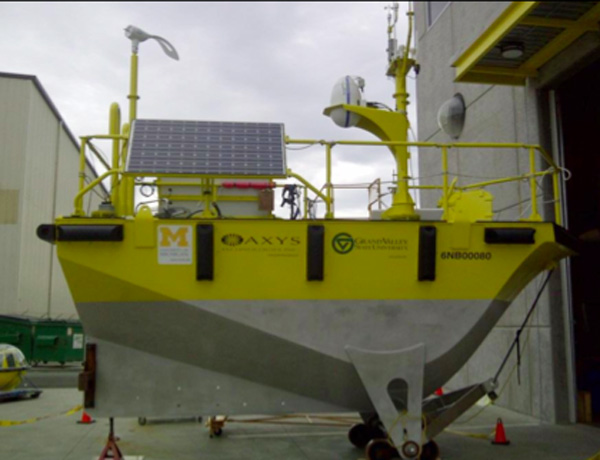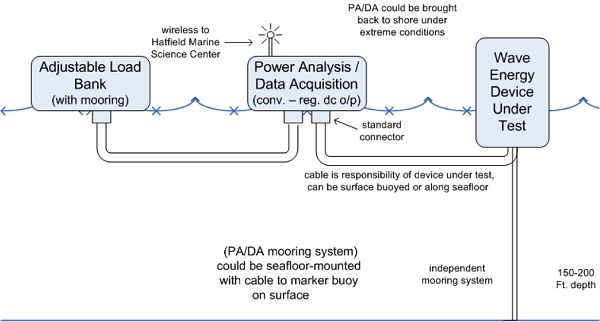This summer a milestone in the U.S. wave energy technology sector will be reached with the launch of the first ever test platform off the Oregon coast.
The Ocean Sentinel, as the platform is known, will be made available to small firms who will be able to test their devices for the first time in open water.

This is a significant step for the startup sector since until now small size firms have been restricted to testing in the lab. The $1.5 million rugged craft is the first of its kind in the U.S., although Europe already has a similar device in operation.
The platform is a project of the Northwest National Marine Renewable Energy Project (NNMREP), a joint effort between Oregon State University (OSU), Washington State University and the U.S. Department of Energy. If all goes according to plan it is expected to be fully operational late this year.
The test platform is the brainchild of Annette von Jouanne, a professor of electrical engineering at OSU. It will be located at a fixed site off the coast of Newport, Oregon.
Although some larger companies developing wave energy currently have their own test platforms, the only other offshore testing device available to smaller startups is the European Marine Energy Centre (EMEC), in the Orkney islands off the Scottish coast.
The EMEC is the granddaddy of marine-power test centers. It has 14 full-scale grid-connected test berths and claims to be “home to some of the most innovative marine energy devices currently in development, with more full-scale devices having been tested at EMEC than at any other single site in the world.”
The test berth is designed to allow testing and analysis without connection to the electrical grid. Providing the funding doesn’t disappear, the NNMREP plan to make up to five complete test platforms. The next phase, well along in planning right now, is to make a platform which can be integrated with the grid via a subsea cable to the shore.
The location of the grid-connected platform is assumed to be the same as the Ocean Sentinel, but additional customer surveys and discussions may result in a change of siting. Like the Scottish test platform, it will consist of multiple berths to allow for the concurrent testing and demonstration of different technologies.

Wave energy technology remains at a nascent stage in the U.S., in part because of the high cost of testing new devices. Unlike wind or solar, wave capture devices are at the mercy of the oceans. Even so, a huge array of prototype devices have been emerging in recent years.
One of the most successful so far was developed by the Scottish firm Pelamis, whose giant wave machines long tubular design has led to them becoming known as “sea snakes”.
Their success has led to a string of high-profile energy companies ordering the devices and in 2008, Pelamis created the world’s first commercial-scale wave-power station off the Portuguese coast.